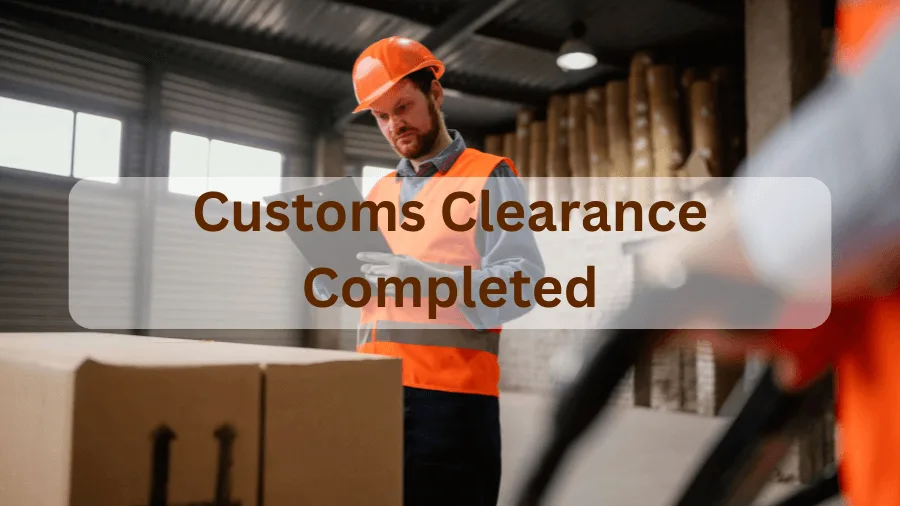Your goods may face delays while crossing borders, but once Customs Clearance Completed status is reached, your shipment is almost at its final destination—whether that’s directly to your customer or to a distribution center. Knowing what happens after customs clearance ensures that your delivery remains on schedule, avoiding unnecessary delays in your supply chain. Let’s take a closer look at the steps that follow this critical process and how long it takes to be cleared.
Customs Clearance Completed Meaning
What is the Difference Between Customs Clearance and Customs Cleared?
The main difference between them is that the efforts to avoid clearance delays are ongoing, while Customs Cleared is finished and goods are cleared for delivery.
The following table outlines the key differences:
| Aspect | Customs Clearance | Customs Cleared |
| Definition | The process of getting goods approved by customs. | The process is finished, and the goods are cleared to move. |
| Involvement | Involves document submission, tax payments, and inspections. | All steps have been completed, and the shipment is cleared. |
| Status | The shipment is still in process and hasn’t been approved yet. | The shipment has passed all checks and is ready for delivery. |
| Outcome | Customs still hold goods until all checks are done. | Goods are authorized for delivery to the destination. |
| Time | Ongoing process until completed. | The process is complete, and the goods are free to move. |
How Long Does Customs Clearance Take To Be Completed?
Usually, customs clearance is completed in less than 24 hours. But if your paperwork is incomplete, it might take several days before your shipment is cleared by customs.
Factors That Affect the Customs Clearance Delays
- The rules are set by both the origin and destination nations.
- The nature of the shipment.
- Whether the incoming goods are subject to regulation.
- The effectiveness of your customs agent.
Simplify Your Clearance Process
Experience hassle-free international trade by choosing to streamline imports with an IOR partner and simplify exports with EOR services. Our expert team is here to simplify the clearance workflow, taking care of all your customs compliance needs so you can avoid delays and penalties.
Ready to enhance your global operations? Complete our consultation form and let us transform your international trade experience.
Frequently Asked Questions
Is it possible for me to arrange customs clearance on my own?
Yes, this means you’ll need to prepay all import duties and taxes, either when you select your cross-border shipping service or separately. In simple terms, choose Delivery Duty Paid shipping options.
Who is responsible for handling the paperwork and payments required for customs clearance?
Typically, it’s the responsibility of the Importer of Record to manage the paperwork and payments throughout the import process. However, this can vary depending on the incoterms used.
An Importer Of Record (IOR) is required to declare the paperwork, settle the fees, and accept the shipment. But what exactly is an Importer Of Record (IOR)? An IOR acts as the temporary legal owner of the goods during this process and can be either the manufacturer/shipper of the goods or a legal individual or entity authorized to represent them.
What steps can I take to prevent customs clearance delays?
1. Prepare your paperwork in advance.
2. Provide a precise description of your goods.
3. Follow the regulations specific to the destination country.
4. indicate the value of your goods.
5. Provide a reason for shipping your items.
6. Ensure that all information remains consistent.
What comes next after the shipment has been cleared?
Once your shipment has been cleared by customs, you can move it from the bonded warehouse to its final destination.

